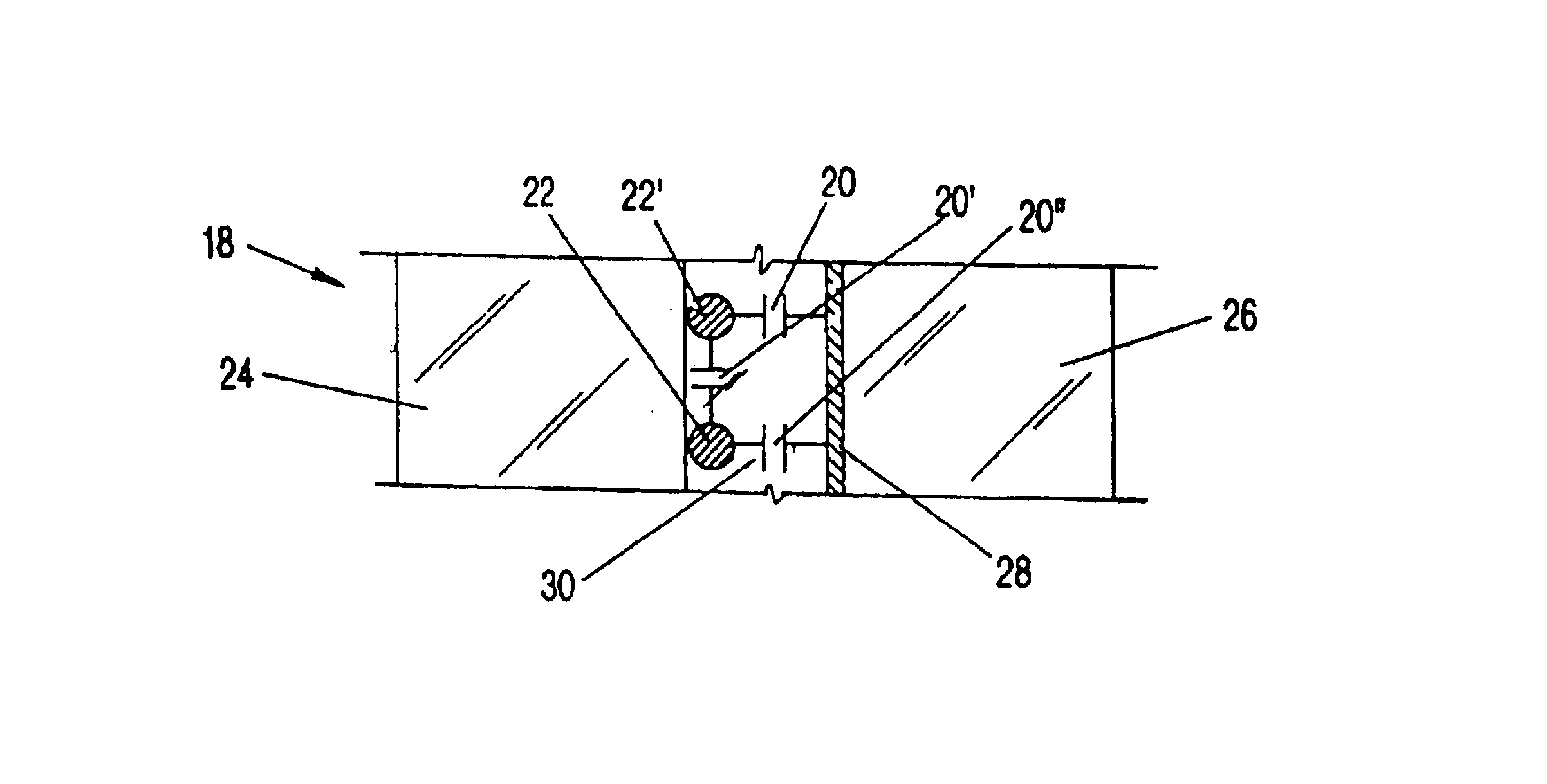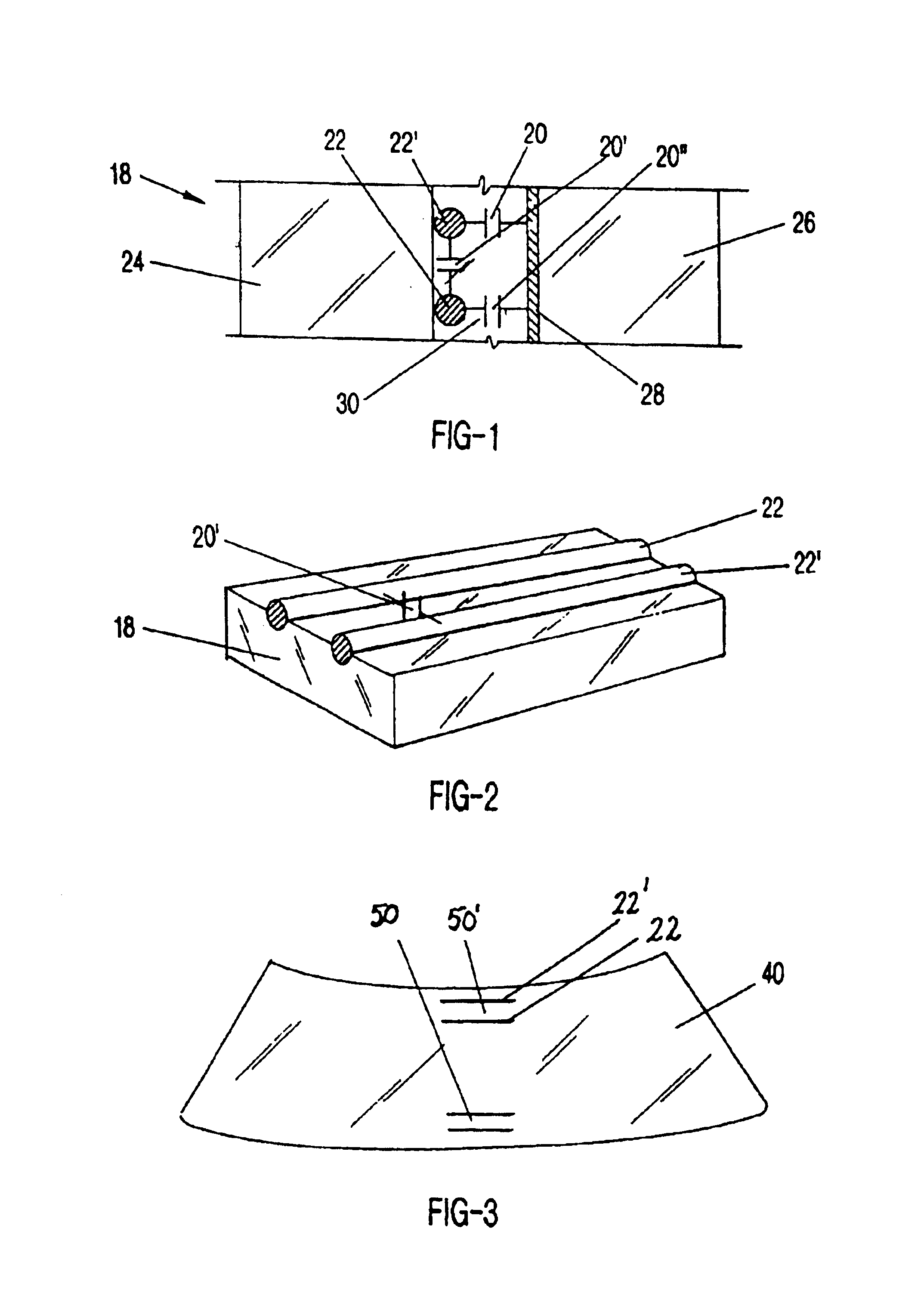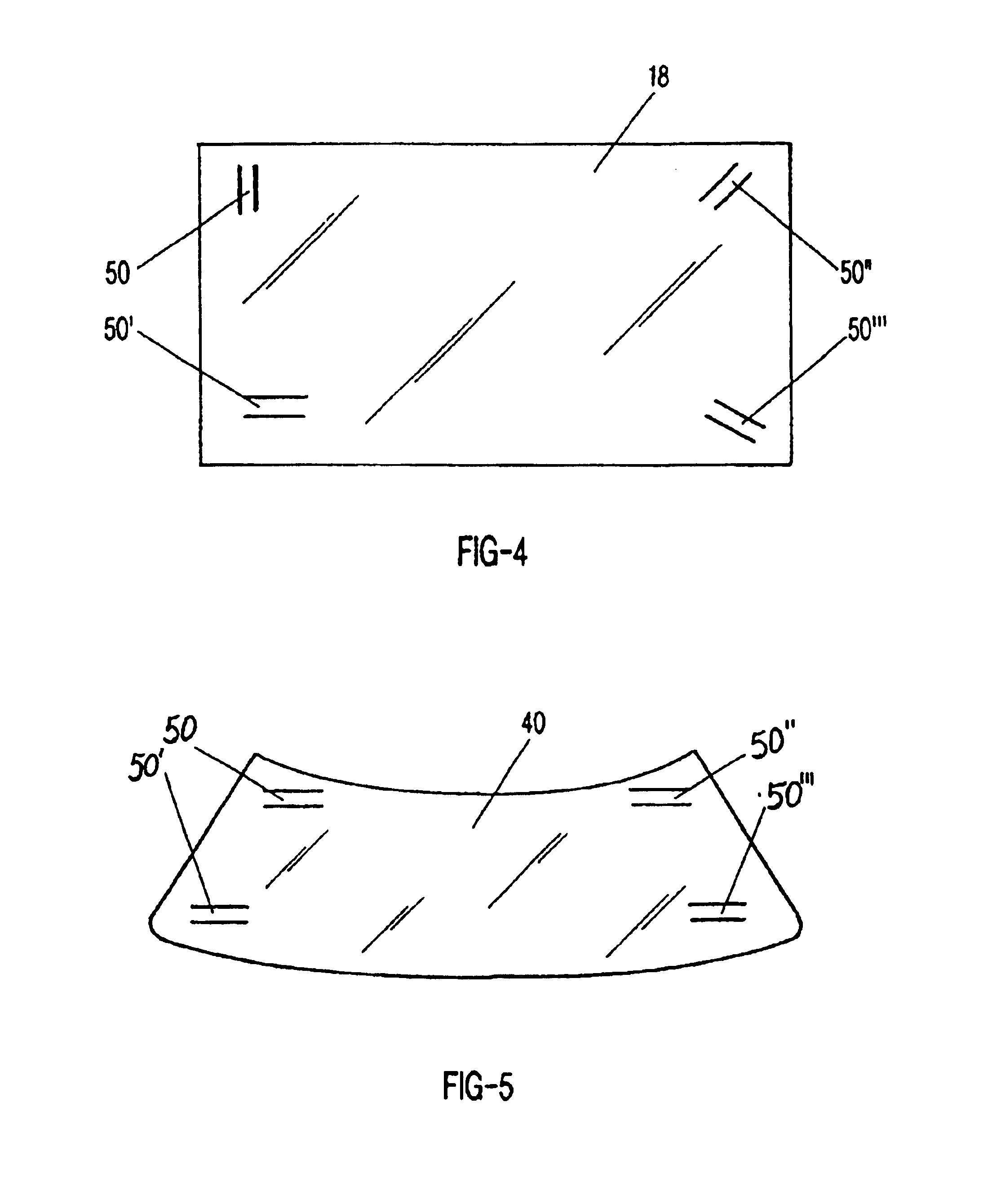Capacitive sensors in vehicular environments
a technology of capacitive sensors and vehicular environments, applied in the direction of vehicular safety arrangements, pedestrian/occupant safety arrangements, transportation and packaging, etc., can solve the problems of passenger serious injury, deficiency of current sensors in many regards, and considerable variation in passenger acceleration
- Summary
- Abstract
- Description
- Claims
- Application Information
AI Technical Summary
Benefits of technology
Problems solved by technology
Method used
Image
Examples
first embodiment
the present invention is applicable to equivalent constructions, methodologies, and applications, including the following: 1) detecting glass deflection as an indication of possible intrusion, such as a burglary attempt; 2) detecting glass deflection as an indication of potential breakage, such as the effect of a strong windstorm on plate glass used in buildings; 3) forming the electrodes on a surface of a transparency product; 4) integrating the electrodes in or on multiple discrete transparency products, such as front and rear vehicle windows; and 5) employing equivalent devices spatially distributed on the windshield or other transparency product, to provide multiple points of detection of a crash pulse, such as accelerometers or strain gauges.
Conductive membrane or coating 28 depicted in FIGS. 1 and 11 (discussed below) and discussed herein can be suitable visually-transparent electroconductive coatings that can be used or are present with the windshield substrate including thos...
second embodiment
In the present invention, a capacitive sensor or sensors are used in a system for detecting a visibility condition of a transparency product. The system distinguishes between a visibility condition and an object in proximity to the transparency product and the system can operate in conjunction with a vehicle occupant protection system to distinguish between a vehicle occupant in proximity to the transparency product and a visibility condition. The system further initiates a response to modify the visibility condition.
Transparency products, such as windshields, are also subject to diminished visibility conditions from the presence of condensing moisture on the interior or exterior surface. The condensing moisture can be either in liquid form, such as condensed fog or rain drops, or in solid form, such as frost, snow or ice. In a second embodiment, the present invention is also a system for detecting a visibility condition of a transparency product and initiating a response to modify ...
third embodiment
the present invention is understood to include equivalent forms, methodologies, and applications. For example, the rigid or semi-rigid panel may be formed of non-conductive material to which is applied a conductive film thus forming the ground plane to which the capacitive sensor electrodes are applied; the conductive film may comprise the driven shield element, as described in the Vranish patent; the cutting edges of the panel may be any number of one or greater, e.g. an oval shape, rectangular shape, or polygonal shape; the reference sensor may be fabricated on a printed circuit board, on the sensor substrate, or in other manners that accomplish the intent of detecting changes in conductivity and / or thickness of the covering material; the positioning of the ASIC may be in any convenient location on or near the panel; the multiple sensors may comprise any number of sensors greater than one; the triangulation sets may use various assignments of the multiple sensors; the discriminati...
PUM
 Login to View More
Login to View More Abstract
Description
Claims
Application Information
 Login to View More
Login to View More - R&D
- Intellectual Property
- Life Sciences
- Materials
- Tech Scout
- Unparalleled Data Quality
- Higher Quality Content
- 60% Fewer Hallucinations
Browse by: Latest US Patents, China's latest patents, Technical Efficacy Thesaurus, Application Domain, Technology Topic, Popular Technical Reports.
© 2025 PatSnap. All rights reserved.Legal|Privacy policy|Modern Slavery Act Transparency Statement|Sitemap|About US| Contact US: help@patsnap.com



